#What the HashTag? Legal TweetChat for Web Journalists March 26, 2010
Posted by lborodkin in : Uncategorized , add a commentCory Doctorow predicted that printed newspapers will become like opera, the province of “rich weirdos.” Despite this, journalism is alive and well in the new media era, and living in Cyberspace.
To help such online journalists, I participated in a Legal Issues Panel on Episode 7 of WJChat through TweetChat with some of the legal leaders in new media journalism. The panel was assembled by Robert Hernandez (@webjournalist), who teaches a course in Online Journalism at USC’s Annenberg School.
My fellow panelists were Kurt Opsahl of the Electronic Frontier Foundation (@EFF), David Ardia and Kimberly Isbell of Harvard’s Citizen Media Law Project (@CitMediaLaw) at the Berkman Center for Internet & Society, and Jack Lerner (@JackLerner) of USC’s Intellectual Property and Technology Law Clinic.
Here is the transcript of WJChat Episode 7. A more coherent digest of the panel discussion is here.
If the formatting looks wonky, that’s because it is. My Columbia Law Review editors would have had a minor heart attack back in the day where we debated such fine points as whether to end possessive plurals with an ” s’ ” or an ” s’s. ” (For grammar geeks, it was decided that official Columbia Law Review style that year was to use the full ” s’s ” because the then-Editor-in-Chief thought the ” s’s ” conveyed plural better than a “lonely single apostrophe hanging out by itself.”)
As a matter of pure Blue Book style, I agree. But I don’t get a credit for my Note on the Columbia Law Review website, since I signed my copyright away. You can read it if you can afford a Westlaw or Lexis subscription.
Perhaps one day we’ll follow @BlueBook on Twitter. Properly, it would be @AUniformSystemofCitation, but that’s over the character length. In today’s Twitterverse, we wouldn’t use an extra character on subtleties such as an extra “s” or whether two spaces follow a period. Life is short, right? Maybe it’s not pretty, but we’d claim attribution for what we write.
That’s a fair trade-off, I think.
But back to the show.
The panel discussed ethical, legal and practical problems of online news gathering and reporting. We focused on issues unique to web journalism – shield laws, web commenting, quotations, expectations of privacy, Creative Commons licenses, retractions, and DMCA agents. At times, there was a division between normative law and empirical law — that is, the split in what we believe doctrines such as the Fair Use defense in copyright may or should allow, and practical rules of thumb easy enough for your average Joe or Jill citizen journalist to stay out of trouble.
Here are some useful resources for online journalists that came out of the discussion:
EFF’s Legal Guide for Bloggers
The Online Media Legal Network
PACER.gov and RecaptheLaw for federal cases
(To this, I add FindaCase.com.)
flickr.com for Creative Commons-licensed photos
archive.org for web history
http://www.copyright.gov/onlinesp/agent.pdf to register a DMCA agent
EFF’s guide to Section 230 Protection
EFF’s Bloggers as Journalists
My final tip? Be true to yourself, be accurate, and check your sources.
Haiti Earthquake, Social Networks and Perfect Information January 15, 2010
Posted by lborodkin in : Uncategorized , add a commentCameraphone picture: We all interview each other (via flickr)
Here’s my post from LAist on the local fundraiser at TiGeorges’ Chicken in Echo Park to benefit the Haitian earthquake relief efforts. The restaurant raised $14,000 from about 300 people – a pretty generous average gift of $47 per person.
Several news crews were there doing video and stories. Gigi Graciette of Fox 11 interviewed me and others for a story on the text messaging campaign and the significance of social media in this disaster. My Blackberry makes an appearance in Gigi’s terrific piece for the local Fox 11 news (as do I):
Last night’s event felt very much like a turning point. Newsmakers swapped places with the news gatherers. The means of distribution became the story itself. Everyone was wandering around TiGeorges, wanting chicken, and taking pictures of the news crews, announcements and each other with their smart phones and cameras.
The time for relaying news of world-wide events approaches zero. The former subjects of news stories can now relay first-person accounts of news events. (Tweets from Haiti from @troylivesay @fredodupoux @carelpedre @RAMhaiti tell the tale).
So what does that mean and where are we heading?
Perhaps the over $10 million raised by the text-messaging campaign is proof of concept of the moral equivalent of the Nobel-prize winning Coase Theorum. (The Coase Theorum supposes that with zero transaction costs, private parties will reach the most economically efficient result.) Perfect information leads parties towards a perfectly efficient result in the market. Or something like that.
Markets are not just for money. There are markets for reputation (some say “whuffie”), trust, morality, and numerous other unquantifiable qualities.
In the marketplace of social responsibility, the cellular carriers’ micropayment systems and voluntary waiver of their own administrative costs largely eliminated transaction costs. Donors knew that 100% of their money (in Wyclef Jean’s Yele program, 91% in the Red Cross program) was going to relief efforts, not the carriers.
Donations were also anonymous, which eliminated the potential self-interest of donation as quasi-advertising. Social media users tend to be in the more affluent sectors of society, but this type of giving did not come with the expectation of have name recognition.
With perfect information, negligible transaction costs and no conflict of interest, people saw the news, heard the pleas, and decided to give a total of over $10,000,000 — $5 and $10 at a time. People want to help others in need, when the barriers to information are removed and donation is easy.
Perhaps the phenomenon could be taken as proof that the morally efficient result of a “Coasean,” connected world is compassion.
That should bump anyone’s faith in the basic goodness of humanity.
Nike+ Human Race for A Better LA December 9, 2009
Posted by lborodkin in : Uncategorized , add a commentSo December 1, 2009 has come and gone and I’m going to put some of these new FTC guides in action with this long-belated writeup of the Nike+ Human race last October 24.
Nike had some extra spots on the eve of its 5K/10K midnight running event on October 24, 2009 through downtown LA and invited a few bloggers. The event took place in some 30 cities worldwide. In Los Angeles, the event partnered with USC and USC football coach Pete Carroll’s charity, A Better LA.
I had been interested in running one of these “something-K” races in general, and in seeing how a coordinated multi-city event like this worked, so when a fellow LAist staffer said Nike’s coordinator had room for a few more bloggers, I jumped at the chance (and recruited a second into the mix). And like magic, boxes of Nike shoes, performance wear and a funny “Nike+” race timer appeared at the designated drop point. They also gave us passes to the pre-game tailgate for the USC-Oregan State game happening the next day. And media parking passes, a hot commodity in downtown LA. So like good little bloggers, we put the stuff on that seemed to fit, and did the run.
Here are some sights and sounds from that night:
Created with Admarket’s flickrSLiDR.
While I do agree with those that thought the loud DJ music and bright strobe lights might be a bit unnecessary, when I asked the Nike rep who helped us register “why midnight?” she replied “because it’s fun!” And my other cavill was that the lyrics in the music at the pre-Oregon State tailgate party were less than family-friendly. Still, they were very nice and let our plus one in. Also they had some interesting folded and perforated burgers, beer and cupcakes at the tailgate (why cupcakes, always?).
Thanks again to Nike for inspiring 7,000 to 8,500 of us to get out of our cars and run for a while, to the local law enforcement for clearing our paths, for the scattered bands of musicians, singers and other entertainers who lightened our hearts in running the course, and to the local residents for putting up with us passing through their residences and workplaces.
Takeaways to ponder: why do we run? What is your idea of a better LA?
More coverage by LAist and Caroline on Crack.
Thanks to Nike, USC and a Better LA.
More Voices on the FTC Guides November 13, 2009
Posted by lborodkin in : Uncategorized , add a commentAnother set of voices on the new FTC Guides, going into effect December 1, 2009, are from Bob Ambrogi’s and J. Craig Williams’ Lawyer2Lawyer podcast
One of them on the podcast said that, knowing bloggers, expect to have some humorous or playful disclosures. At BlogWorld 2009, people were very interested in the form these disclosures are to take. Will there be best practices?
The Hidden Value of Creative Commons April 16, 2009
Posted by lborodkin in : Uncategorized , 6commentsOn Avvo.com, I recently answered this question on music sampling:
“What are the laws on sampling music for a beat?”
Here is my answer:
“Sampling” music sound recordings is taking a portion of a sound recording and reusing it as a portion of a distinctly altered musical work. Under the copyright law, this reuse and transformation creates what is called a “derivative” work.
In the absence of any other agreement or license, the creator of the original musical sound recording has a copyright in the musical sound recording when it is released commercially. This is regardless of whether the work is registered with the Copyright Office.
It is actionable copyright infringement to incorporate portions of a musical sound recording that has been commercially released into a new work unless (a) the copyright holder grants a license allowing both copying and the creation of derivative works or (b) the owner of the sound recording has made the music available for public use under a gratis Creative Commons license that permits derivative works.
You can search for musical sound recordings that have been made available to the public for beat sampling under a Creative Commons license at creativecommons.org. You must heed the Creative Commons-published guidelines for any particular work. Only works licensed for “remix,” that is, derivative uses, may be used for beat sampling. Some owners also restrict Creative Commons license to non-commercial uses, and/or a reciprocal “share alike” license. Most Creative Commons licenses require attribution, or credit, in lieu of a license fee. Any use that falls outside the Creative Commons guidelines for a particular work would be actionable copyright infringement.
That is the lawyer’s answer. But there is another side to using Creative Commons work that reveals the flip side of my previous post on why attribution matters in copyright law. Attribution is a way of finding and linking to people that you want to work with and who want to work with you. I discovered this for myself about a year ago by putting the photos in my free Flickr account into Creative Commons under a non-commercial, attribution, no derivatives license.
I had surprising and wonderful results. Every so often, I get a little Google news vanity alert about a photo that’s been credited on the Internet. One of my faves is the remix of Lawrence Lessig at the top of this post. It is actually a collage that was created by Andy on the fly for a G33k dinner. More profoundly, it has brought some wonderful people into my life.
Tag up your photos and try it yourself. If they’re on a free hosting service, what do you have to lose?
“Happy 6th Birthday Creative Commons” collage by netZoo/revolute. Shared under Creative Commons license -obviously – via flickr.
5 Little Ways to Be Greener in LA April 15, 2009
Posted by lborodkin in : Uncategorized , 15comments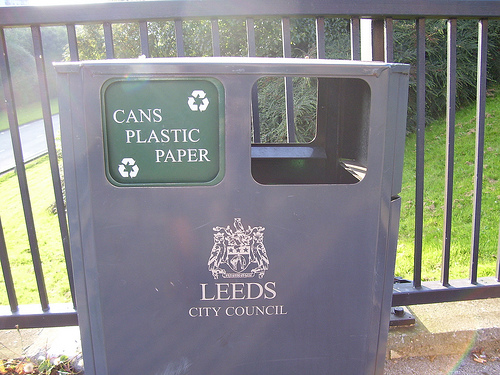
In honor of Earth Day, April 22, 2009, here are five little things I learned at the recent How To Be Green in LA . . . and Beyond!” panel. The panel was co-moderated by my friend Michael Liskin and (literally) touchy-feely “eco-MacGyver” Darren Moore. It was hosted at LA co-working center Blankspaces as part of Jerome‘s Blankspaces Meetup Series.
You can view the full recap here. [Disclaimer: The video begins with a team-building exercise of rubbing each other’s shoulders. That’s the aforementioned touchy-feely.]
The panel had a lot of great knowledge, myth-busting, tips, reminders and encouragement. Here, in no particular order of magnitude, are five little takeaways from the night.
1. Play an outdoor sport.
Mike Hill of the Art of Sports and Apparel suggested doing something fun and active outdoors as a little baby step to build eco-awareness. It is elegant in its obviousness. Be outside. Remind yourself how lucky those of us are who have access to clean air, sunshine and healthy bodies. There is nothing like having to focus your mental energy on doing something physically difficult enough that you have to let go of material and abstract life clutter.
2. Cans are truly recyclable; plastic bottles aren’t.
Siel, aka GreenLAGirl, pointed our that her can of beer is greener than your bottled water. Some plastics claim to be bio-plastic and somewhat degradable. However, the chemical process of creating plastics forms a molecule that can never, ever be undone. There is simply nowhere else for it to go, other than the ocean and the landfill. By contrast, aluminum is a natural metal that can be recycled infinite times.
3. Commercial cosmetics are poison.
Karen Solomon of Opportunity Green admitted, straight up, that she did not fully realize how much lead and other toxins are in most big-time makeup brands until she read “The Ugly Side of Beauty” by Stacy Malkan. This scared me silly. The waste in cosmetics packaging has always been apparent, but I never knew that the contents of makeup were directly harmful to its users. Blithely, I assumed the FDA had our backs. They don’t. I’ll do Malkan’s book for the next Book Club but Karen’s word is good enough for me.
Panelist Tracy Hepler of Your Daily Thread made it feel okay to want eco-approved girly beauty products without killing yourself. I look forward to directing some dollars there.
4. “Reduce” comes first for a reason.
Panelist Natalie Friedberg of All Shades of Green, a local Silverlake store for green products, pointed out this truism by reminding us that it’s “Reduce, reuse, recycle” in that order. Although reusing and recycling are admirable, best practice is just not to accumulate more than you need to begin with. It’s great to be reminded of my own New Year’s resolutions.
5. Computers use up the Earth, too.
Andy Sternberg of Live Earth reminded us in social media that even though a paperless office seems preferable to tree-killing, all that power does come from somewhere. There are wind-powered blog hosting sites that operate primarily on wind power, with conventional electricity as a backup. Siel uses one for her site. Also, there’s no shame in going totally unplugged once in a while.
“Reduce, reuse, recyle” photo by Aimee Castanel under Creative Commons License via flickr
Green panelists’ recap from the BLANKSPACES panel: How to be Green in LA April 15, 2009
Posted by lborodkin in : Uncategorized , 3commentsGreen panelists’ recap from the BLANKSPACES panel: How to be Green in LA
Posted using ShareThis
“Hope” for the Best: Manny Garcia, Shepard Fairey and the Associated Press February 5, 2009
Posted by lborodkin in : Uncategorized , 14commentsUpdate 3/12/09: The Associated Press filed their answer and counterclaims against Shepard Fairey.
You can read the answer and counterclaims here.. It’s a great read. The answer and counterclaims include lots of embedded color pictures (something I’ve never seen in a pleading before).
The AP’s answer and counterclaims emphasize the artistic merit in news photography, the AP’s non-profit status, and the importance of having a financially independent press.
Is it persuasive? You be the judge.
Update 2/9/09: Shepard Fairey has sued the Associated Press in New York for a declaratory judgment that his poster is fair use. No word on whether Manny Garcia will be joined.
Here’s my post on LAist about the Associated Press’s claims that Shepard Fairey infringed its copyright in AP photgrapher Manny Garcia’s 2006 photograph of President Barack Obama. No lawsuit has been filed, but the controversy illustrates the huge divergence in what people believe to be “fair use” under copyright, and what they think it should be. It’s a dynamite case on so many levels, given the timing, the economic climate, the copyright reform movement and the promise of accountability in the new administration.
There’s a terrific collection of links, discussion and summary of copyright standards and precedents courtesy of Carolyn E. Wright, aka PhotoAttorney.
So who’s right? It’s a great case for setting the law straight on the non-economic rights of copyright holders but a lousy case for damages. Fairey openly admits he copied the Garcia photo but it is also widely reported that Fairey hasn’t directly profited economically from the poster. The AP hasn’t tried to enjoin the “Hope” image and it also hasn’t revealed whether the compensation it reportedly seeks is monetary or non-monetary.
I wonder if proponents or strong copyright will figure out that they stand to gain tremendously if the AP takes this once-in-a-lifetime opportunity to set precedent for the non-economic value of copyright. Shepard Fairy admits he copied the image. When is that ever going to happen again (or with such a high-profile work)? The AP doesn’t need Shepard Fairey’s money. They do, however, need to protect their copyrights. If the AP’s lawyers take the long view, they will restrict their quest for compensation to joint copyright in the image, forcing a ruling on attribution and derivative works only.
At the very least, I “hope” everyone knows who Manny Garcia is by now. His photo really is terrific.
Verena Mei, Eco-friendly Racer January 20, 2009
Posted by lborodkin in : Uncategorized , 2comments
Here’s my article on Verena Mei for LAist.
Verena is the first race car driver in the world running on alternative fuel competing head-to-head with gas-powered cars. Verena converted her Formula Drift car to run on clean-burning E85 fuel and won the Redline time attack series.
Next up, I will be interviewing Marc Davis, a developmental driver for Joe Gibbs racing who is part of NASCAR’s diversity program.
3 Pithy Thoughts from 2008 January 5, 2009
Posted by lborodkin in : Uncategorized , 8commentsHere are props to the authors of three pithy sound bites that shaped my use of social media in 2008.
1. “Don’t drink the haterade.”
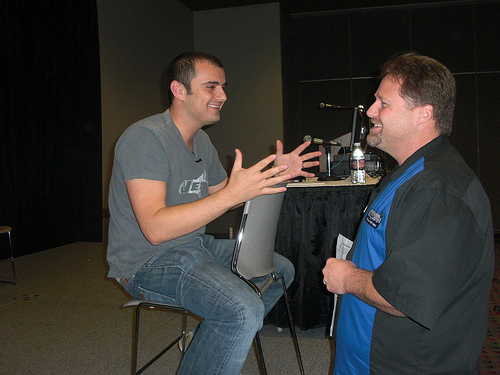
—Gary Vaynerchuk, Keynote at Blog World Expo ’08.
Gary Vaynerchuk (aka “Gary Vee”) of Wine Library TV gave a captivating and inspiring keynote address at Blog World Expo in Las Vegas in September 2008. If you can find a recording of it, please watch and link to it. Other advice from Gary is that if you’re going to podcast, update every day, or try to do so at least three times a week. That’s what you need to do to keep people’s attention. Another point he made is to give away as much as you can and still make a profit.
What Gary was referring to with the “Haterade” comment is his advice not to waste energy envying, hating, or criticizing those who are successful. Don’t turn away from others with a huge following merely because they are successful. Join them. Try to learn what works for them. Don’t drink the Haterade. Just don’t.
2. The secret to Twitter is who you follow, not who follows you.

—Robert Scoble, from The Secret to Twitter, Scobleizer, March 23, 2008.
(photo of Twitter/No Twitter stickers from SummerMash LA)
This neat little article wraps up what is so cool about Twitter. Follow because you want to hear about things you don’t know. Never mind the numbers.
3. “The Asteroid is coming.”
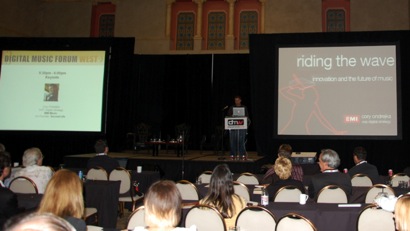
—Cory Ondrejka, Keynote at Digital Music Forum West.
This little sound bite was taken from Corey Ondrejka’s keynote speech at Digital Media Wire‘s Digital Music Forum West last October. This conference was extraordinary in that it actually got leaders from clashing industries — the recording industry and the consumer electronics industry — on stage, face to face, frankly debating their mutually incompatible business models with no punches pulled. (Incidentally, it was the only time I ever heard someone answer the question of where the money from RIAA settlements goes. The answer, according to the panelist from one of the major record labels, is that it is split 50/50 with the artists after costs are taken off the top.)
Corey Ondrejka asked people in the audience to raise their hands if they know anyone who has an assistant printing out their emails, i.e., the dinosaurs. He was making a point about business models. “The asteroid is coming.”
Who shifted your paradigms in 2008?
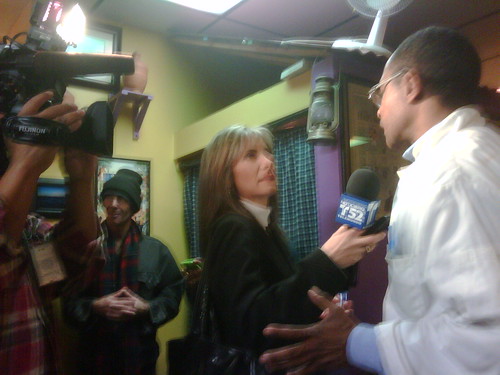
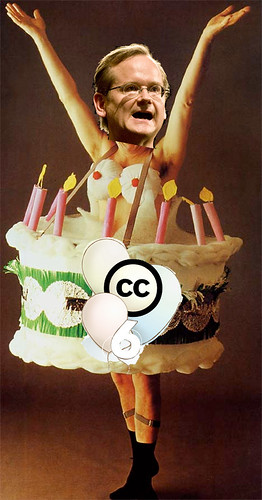




 del.icio.us
del.icio.us flickr
flickr LinkedIn
LinkedIn Twitter
Twitter


